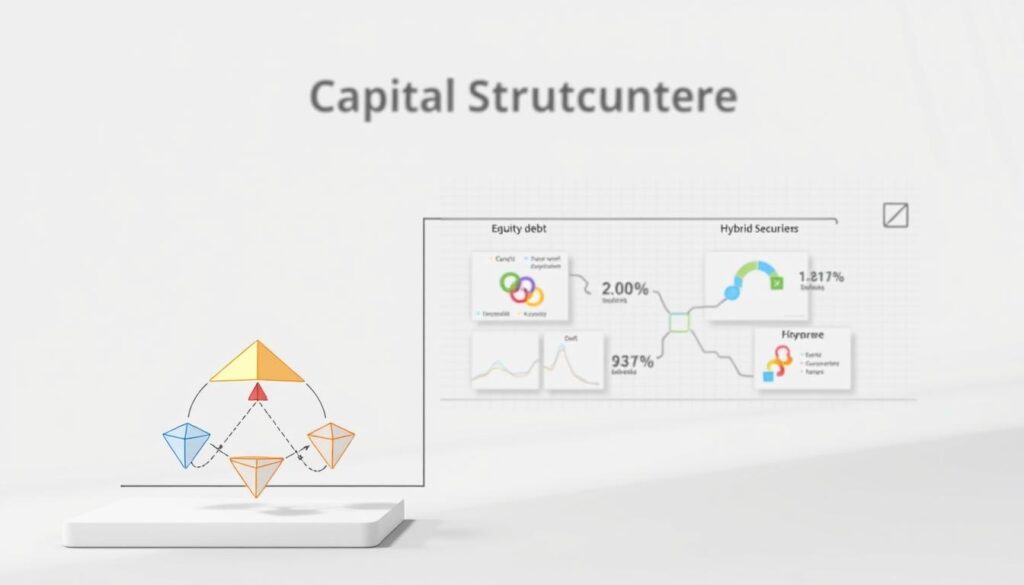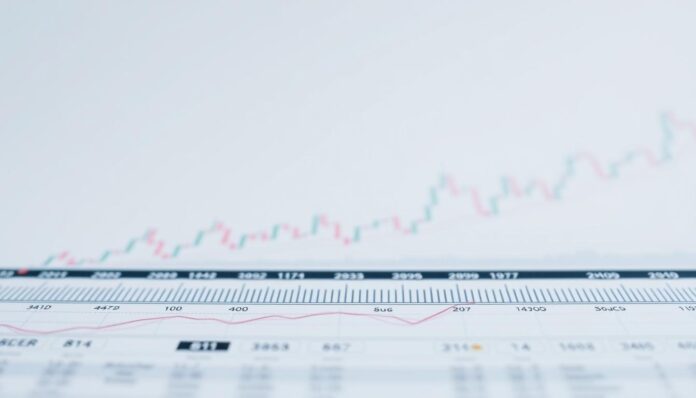Capitalization in Trading plays a vital role in understanding how companies are valued and traded. Whether you’re new to investing or a seasoned trader, grasping market capitalization helps decode stock performance and investment opportunities. This guide breaks down key concepts to simplify your journey.
Key Takeaways
- Market capitalization measures a company’s total stock value, impacting investment strategies.
- Capitalization in Trading affects risk assessment and portfolio diversification.
- Key metrics like price-to-earnings ratios and market cap to sales ratios guide informed decisions.
- Adapting to market trends and regulatory changes ensures smarter capitalization analysis.
- Mastering these concepts builds a competitive edge in volatile financial markets.
What is Capitalization in Trading?
Capitalization in trading is a core concept shaping how investors assess companies and markets. Let’s break down its basics and real-world impact.
Definition of Capitalization
The market capitalization definition refers to a company’s total value if all its shares were bought at current prices. Calculated by multiplying outstanding shares by stock price, it reveals a company’s size. For instance, Apple’s $3 trillion valuation makes it a “large-cap” stock.
| Type | Market Cap Range |
|---|---|
| Nano | < $50 million |
| Small | $300 million to $2 billion |
| Large | > $10 billion |
Importance in Financial Markets
Investors rely on capitalization to:
- Identify growth potential
- Assess risk levels
- Track industry trends
The total market capitalization of global stocks, now over $80 trillion, helps analysts gauge economic health. Smaller firms may offer higher returns but carry more risk, while large-caps often stabilize portfolios.
“Market cap isn’t just a number—it’s a compass for smart investing.”
Different Types of Capitalization
Understanding capitalization types helps traders assess company value accurately. Let’s explore three key categories every investor should know:
Market Capitalization
Stock market capitalization is calculated by multiplying a company’s share price by its total shares outstanding. For example, a company with $100 stock price and 10 million shares has a $1 billion market cap. This metric shows investor sentiment but doesn’t reflect actual asset values. Tech giants like Apple often have high market caps due to public demand.
Book Value Capitalization
Book value capitalization uses a company’s balance sheet. It subtracts liabilities from assets to show net worth. A manufacturing firm with $500 million in assets and $200 million in debt would have a $300 million book value.
“Book value is like a financial snapshot of what’s owed versus what’s owned,”
explains Investopedia. This contrasts with market cap, which focuses on perceived value.
Equity Capitalization
Equity capitalization focuses on shareholder ownership. It includes common and preferred shares, showing how much investors have committed. The capitalization ratio compares debt to equity, helping assess financial stability. A company with $400 million equity and $100 million debt has a 0.25 capitalization ratio, indicating strong equity reliance. Traders use this to spot over-leveraged firms or undervalued stocks.
Each type serves a unique purpose. Market cap highlights investor confidence, book value reveals asset-backed worth, and equity capitalization gauges financial health. Traders blend these metrics for informed decisions.
How Capitalization Affects Trading Decisions
Capitalization shapes how traders evaluate opportunities. When assessing investments, the size of a company’s market cap directly impacts valuation approaches and risk tolerance. Traders adjust strategies based on whether they’re dealing with small cap stocks or large cap companies, each offering distinct pros and cons.

Impact on Stock Valuation
Valuation methods vary widely between small cap stocks and large cap companies. Investors often prioritize growth potential when analyzing smaller firms, while larger companies are judged by consistent earnings. For example, tech startups (small cap) might be valued based on future projections, whereas established giants like Amazon or Coca-Cola (large cap) rely on proven revenue streams.
- Small cap stocks often use metrics like revenue growth rates.
- Large cap companies focus on dividend yields and P/E ratios.
Risk Assessment
Risk profiles differ sharply between company sizes. Small cap stocks face higher volatility due to limited resources, while large cap companies offer stability but less explosive growth. Traders balancing portfolios often mix both to spread risk:
“Small caps can amplify returns but require close monitoring. Large caps act as anchors during market swings.”
Traders using this mix often track liquidity: large cap companies trade more frequently, reducing sell pressure, while small cap stocks may face price gaps during high volume trades.
- Small caps: Higher risk, higher reward potential.
- Large caps: Steady returns with lower volatility.
Capitalization Metrics to Consider
Traders and investors rely on specific metrics to assess company value and market positioning. These tools simplify comparing businesses of all sizes, ensuring decisions align with capitalization in trading goals. Let’s explore three key indicators every trader should master.
Price-to-Earnings (P/E) Ratio
This ratio divides a stock’s price by its earnings per share. A high P/E might signal strong growth expectations, while low values could highlight undervalued opportunities. Traders use it alongside market cap to spot trends in capitalization weighted index components like the S&P 500.
Market Cap to Sales Ratio
Market cap divided by total revenue reveals efficiency. Tech giants with high sales growth may have ratios signaling innovation, while traditional industries show stability. Comparing ratios across sectors helps avoid biases from capitalization weighted index dominance by large firms.
Dividend Yield
Dividends divided by stock price shows income potential. Large-cap companies often prioritize consistent payouts, making this metric critical for income-focused strategies. Pair it with market cap to target stable, profitable businesses.
“Combining these metrics paints a clearer picture than relying on any single number alone.”
Use these tools together—like screening for low P/E and high dividend yields—to refine your approach. Adjust weights based on goals, whether growth or income, to align with capitalization in trading strategies.
The Role of Capitalization in Portfolio Management
Effective portfolio management relies on understanding how market capitalization shapes investment choices. By focusing on capitalization threshold ranges, investors can build strategies that adapt to changing market conditions.
Diversification Strategies
Spreading investments across small-, mid-, and large-cap companies reduces exposure to sector-specific risks. Consider these steps:
- Incorporate 30-40% large-cap stocks for stability
- Allocate 20-30% to mid-cap firms for growth potential
- Use 10-20% small-cap holdings for high-risk opportunities
Balancing Risk and Return
“Investors must balance greed and fear by aligning capitalization tiers with their timeline,” says Morningstar analyst Emily Chen.
Large-cap stocks often outperform during economic downturns, while small caps may surge during expansions. Setting a capitalization threshold ensures portfolios stay aligned with personal risk tolerance. For example, conservative investors might avoid companies below a $2 billion capitalization threshold to minimize volatility.
Regular rebalancing keeps allocations in check. Tools like ETFs tracking S&P 500 or Russell 2000 indices simplify maintaining this balance without excessive trading.
Understanding Capitalization Structures
Behind every company’s financial strategy lies its capitalization structure—the mix of debt, equity, and other funding sources. For traders, this structure offers clues about risk, growth potential, and management priorities. Let’s explore how these frameworks shape investment decisions.

Capitalization Structure Explained
Capital structures break down into three core parts:
- Debt: Loans or bonds requiring interest payments.
- Equity: Funds from shareholders, including common and preferred shares.
- Hybrid instruments: Such as convertible bonds blending debt and equity traits.
For example, tech giants like Apple often balance equity and low-risk debt to fuel innovation without overleveraging.
Why Structures Vary
Companies tailor their capitalization structures to fit their goals. Startups may rely on venture capital (equity) to avoid debt burdens, while established firms like Walmart use bonds to fund expansions. Tax benefits, industry norms, and interest rate trends also drive choices. Traders analyzing these patterns can spot red flags—like excessive debt signaling repayment risks—or opportunities in undervalued equity.
“A balanced capital structure isn’t one-size-fits-all—it’s a roadmap of a company’s priorities.”
Remember: Capitalization in Trading isn’t just about numbers. It’s about decoding how a company’s market capitalization interacts with its funding mix to signal future performance. Keep this lens in mind when evaluating stocks or sectors.
How to Analyze Company Capitalization
Mastering capitalization analysis starts with focusing on core financial data. Let’s break down the steps to evaluate a company’s value effectively.
Key Financial Indicators
Track these metrics to gauge a company’s health:
- Debt-to-equity ratio: Compares liabilities to shareholder equity.
- Cash flow statements: Highlight liquidity and operational efficiency.
- Revenue growth trends: Compare year-over-year performance against industry averages.
| Metric | Purpose |
|---|---|
| Market cap vs. revenue | Reveals if stock market capitalization aligns with earnings potential |
| P/E ratio | Shows investor sentiment compared to industry benchmarks |
Tools for Analysis
Access these resources to streamline evaluations:
- Bloomberg Terminal: Provides real-time total market capitalization data and sector comparisons.
- Yahoo Finance: Offers free stock market capitalization charts and ratio analysis tools.
- Excel models: Create custom spreadsheets to compare multiple companies side-by-side.
“Start with free tools like Google Finance for basic analysis before upgrading to premium platforms,” advises Wall Street analyst Sarah Thompson.
Begin by comparing a company’s metrics against competitors and industry standards. Use visual charts to spot trends, and always cross-reference multiple data points for accuracy.
The Relationship Between Capitalization and Market Trends
Market trends and capitalization levels often move hand in hand. Whether markets rise or fall, companies of different sizes react in predictable ways. Knowing these patterns helps traders adjust strategies to match market phases.
Bull vs. Bear Markets
In strong bull markets, large-cap stocks drive gains in capitalization weighted indexes like the S&P 500. These indexes prioritize larger firms, amplifying their performance during upswings. During bear phases, small caps often lag first as investors shift to safer assets. Tracking rotation between sectors and capitalization tiers reveals where funds are flowing.
Economic Indicators
Key data like GDP or interest rates shape how companies perform based on size. Robust GDP growth may lift small caps first, as they expand with the economy. The capitalization ratio—debt compared to equity—also matters. Companies with stronger ratios (less debt) handle downturns better, retaining value during uncertainty.
Market cycles reward those who track capitalization shifts and economic signals to stay ahead.
Traders use these insights to adjust portfolios. For example, a rising interest rate environment might favor large caps with stable capitalization ratios over smaller peers. Combining these factors helps align strategies with current conditions.
Common Mistakes Regarding Capitalization
Traders often overlook critical factors when evaluating company capitalization. Two frequent errors—ignoring fundamentals and failing to track market shifts—can lead to costly decisions. Let’s explore how to avoid these pitfalls.
Overlooking Company Fundamentals
Small cap stocks might seem promising based on market cap alone, but ignoring revenue trends or debt levels can hide risks. For example, a fast-growing tech startup (small cap) with soaring valuations could collapse if its cash flow dwindles. Similarly, large cap companies like Apple or Amazon aren’t immune to missteps in innovation or management. Always check profit margins, debt ratios, and leadership stability before relying solely on capitalization labels.
Ignoring Market Changes
Economic cycles and industry disruptions can flip capitalization signals. During the 2020 pandemic, many small cap stocks in travel sectors fell sharply despite high market caps. Traders who dismissed shifts in consumer behavior or supply chain issues missed warning signs. Track interest rates, geopolitical events, and sector-specific news to adjust strategies for both small and large cap companies.
“Capitalization is a starting point, not a crystal ball. Dig deeper.” – Warren Buffett
- Tip 1: Pair capitalization data with earnings reports and industry analysis.
- Tip 2: Compare small cap stocks to peers in their sector, not just large cap giants.
- Tip 3: Rebalance portfolios as market conditions evolve, even for stable large cap companies.
Smart traders blend capitalization metrics with real-world context. Stay adaptable and avoid shortcuts—your portfolio will thank you.
Future Trends in Capitalization and Trading
As markets evolve, capitalization in trading continues to shape how investors approach risk and opportunity. Innovations and regulations will redefine strategies, pushing traders to adapt.
Emerging Technologies Impact
Technologies like blockchain and AI are reshaping capitalization analysis. Platforms leveraging advanced tools help traders track real-time market shifts, while AI models predict trends affecting equity capitalization. Alternative exchanges may blur traditional capitalization thresholds, offering new ways to value assets.
Regulatory Changes and Their Effects
Regulators worldwide are rethinking capitalization requirements. Shifts in policies could tighten margin rules or redefine how firms calculate market cap. Traders must stay informed to avoid penalties and seize advantages in evolving frameworks.
Staying ahead means combining historical knowledge with forward-thinking strategies. As markets grow more interconnected, mastering capitalization in trading will remain key to navigating tomorrow’s financial landscape.

A writer, editor, and publisher with a knack for crafting informative articles.

